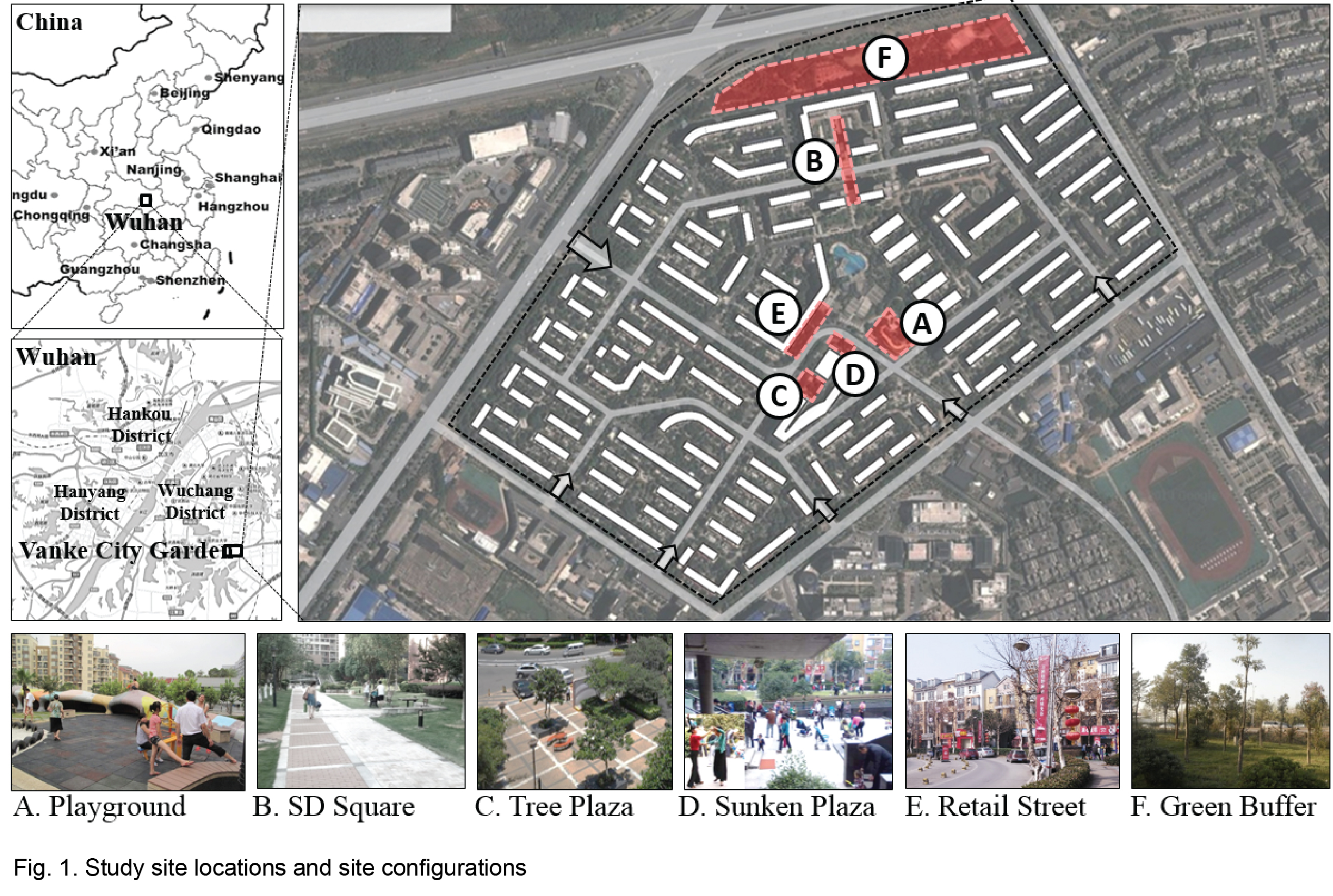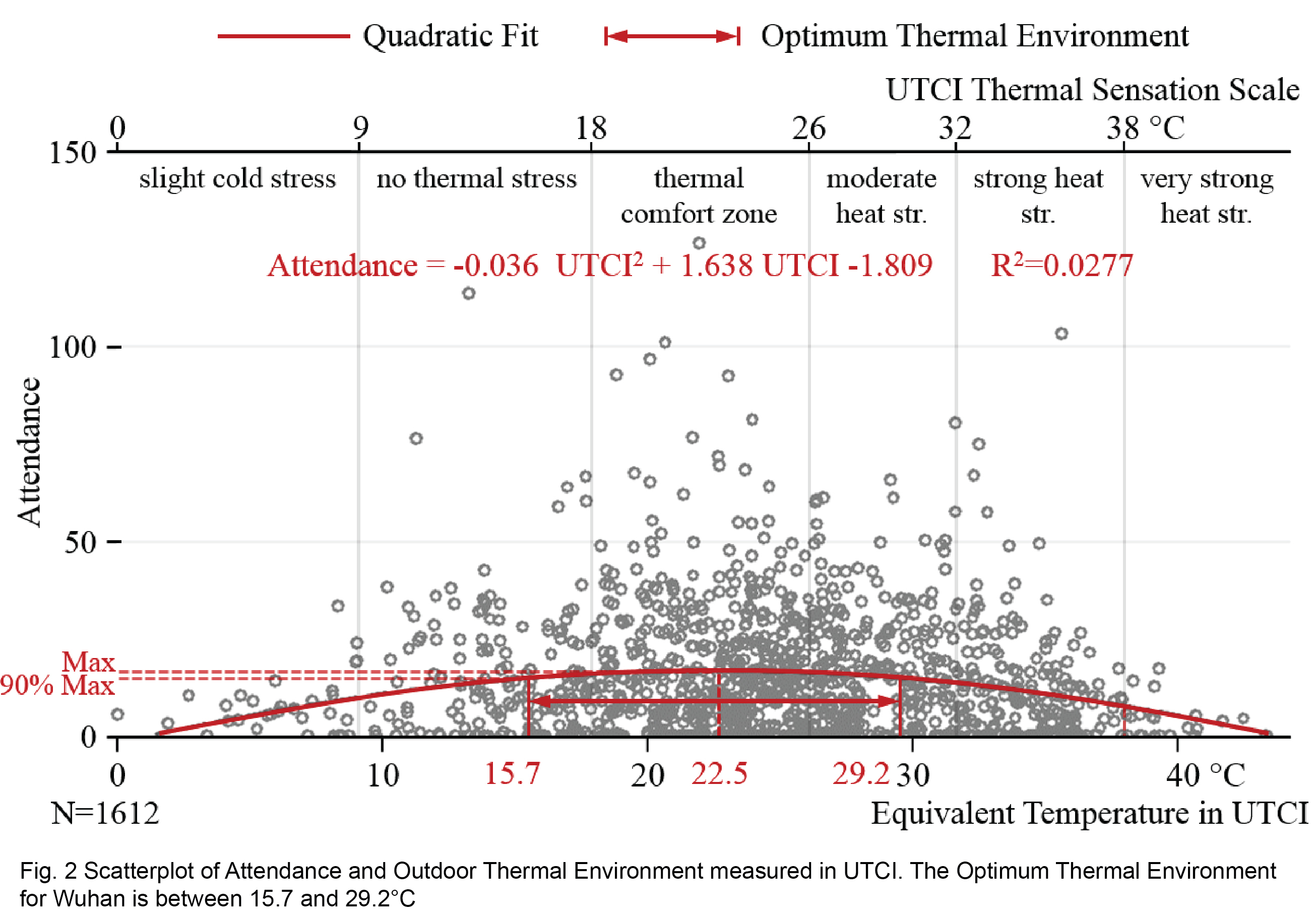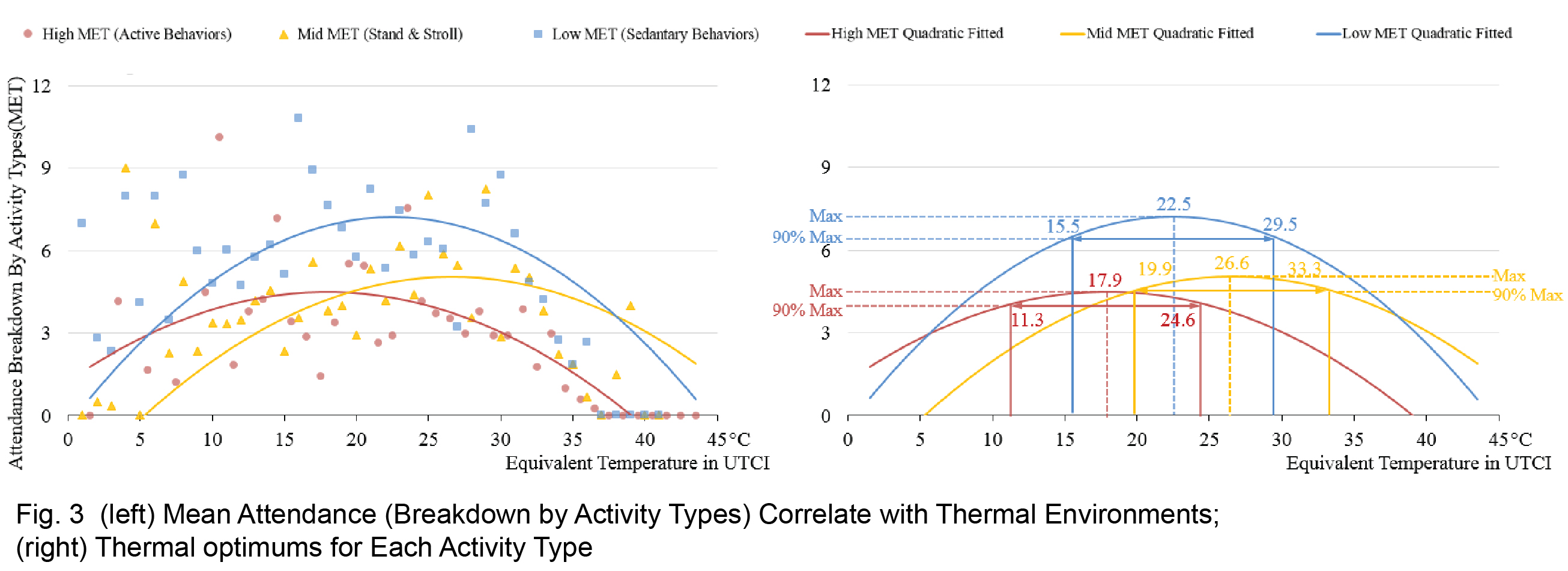A Thermal Perspective of Behaviors in Outdoor Open Spaces: the Wuhan Experiment
The outdoor thermal environment correlates with occupant behaviors in open spaces. The range of thermal environment that is conducive to outdoor activities, however, is inadequately defined. Existing studies fail to characterize behavioural responses to thermal environments by activity types, age or gender.
In this research project, we conducted field studies on six open spaces in Wuhan, China, a city with humid subtropical climate. Observations, questionnaires, and measurement were taken under a variety of weather conditions in 4 years. A playground was renovated by adding shading shelters, vegetation cover, and high-albedo paving to reduce summertime heat stress. On-site thermal environment were assessed using the Universal Thermal Climate Index (UTCI). We defined the Optimum Thermal Environment (OTE) as the range where an open space is well-attended (attendance above 90% of peak value). OTE was a more consistent measure than the self-reported Thermal Acceptable Range (TAR) in this study. The OTE for Wuhan was 15.7-29.2°C in UTCI. The OTE for intense activities (11.3-24.6°C) was lower than light activities (15.5-29.5°C) and lower still than moderate activities (19.9-33.3°C). The elderlies exhibited a narrower range of OTE compared with younger groups. The OTE for male (17.4-30.0°C) was higher than it was for female (15.7-28.5°C). The experiment confirmed the causalities between outdoor thermal environment and activities: the renovated playground attracted 80% more occupants in summer; people stayed longer, reported less heat stress, and interacted with each other more often. Results remained significant after controlling for weather, air quality, daily and weekly routines. Findings had implications for the design of open spaces.




